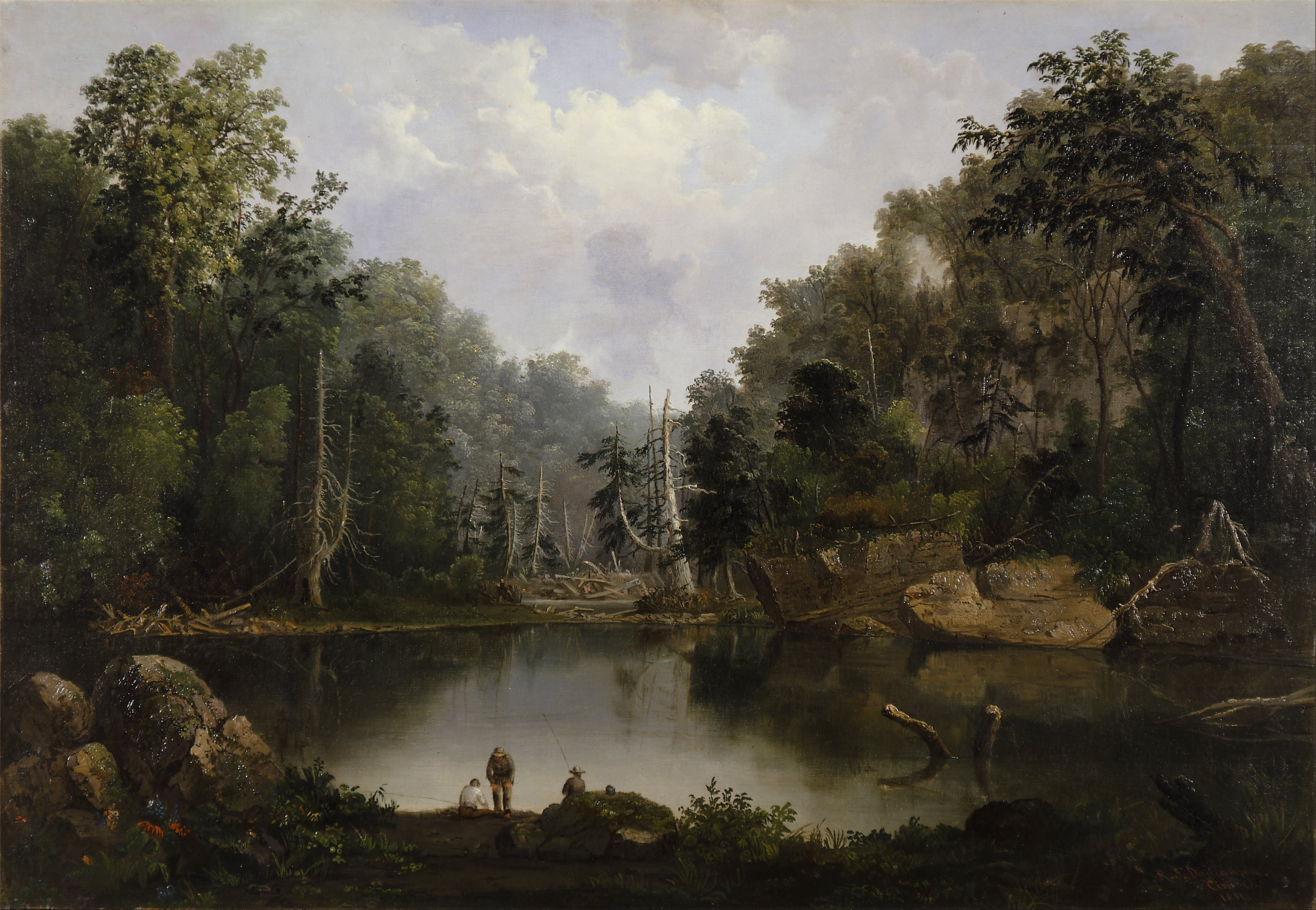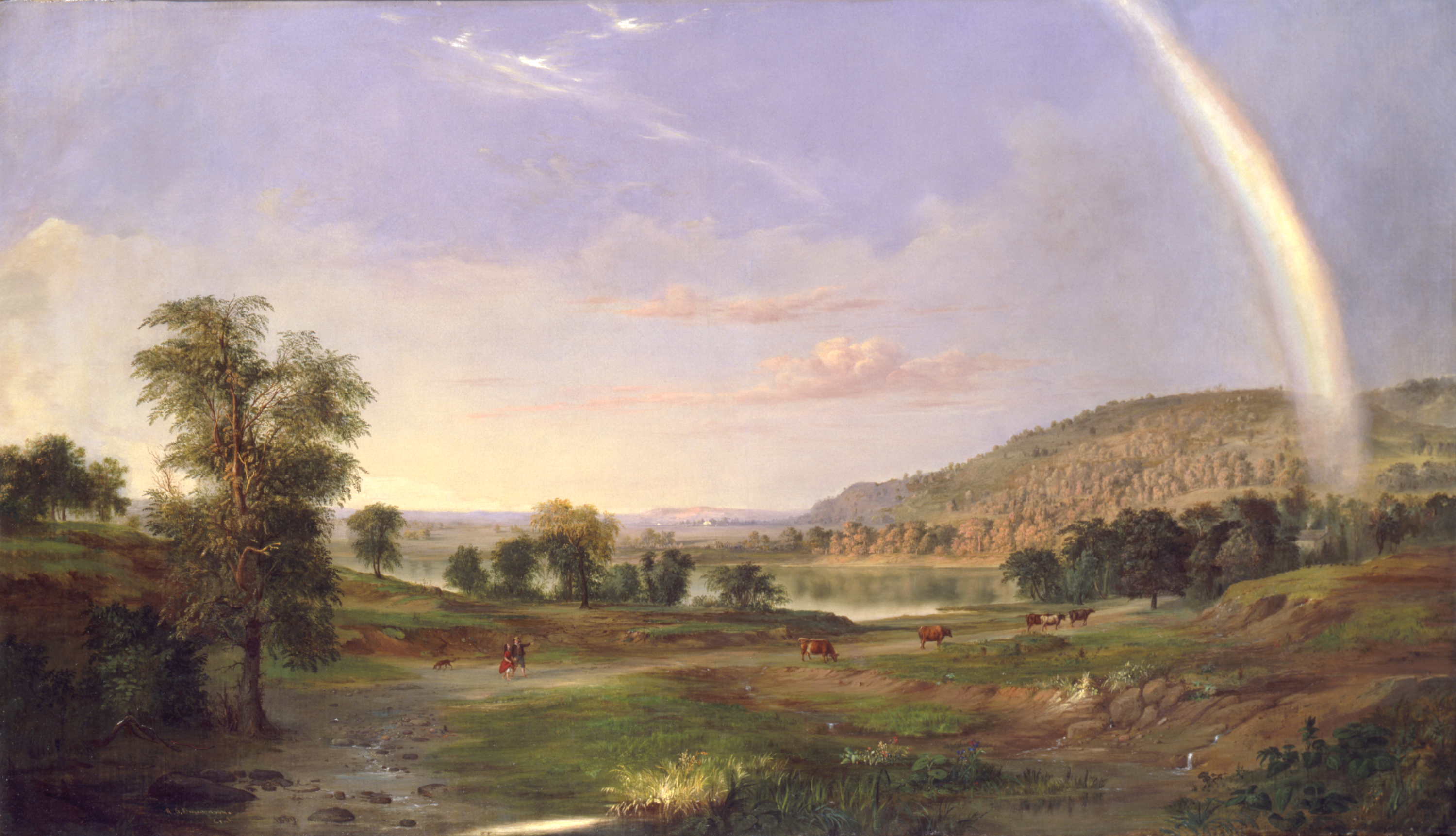This painting is often considered the artist’s finest work. Born to free black parents outside of Pittsburgh, Robert S. Duncanson moved to Cincinnati in about 1840 to begin his career as a serious landscape artist. Only miles away from the Confederate, slave-owning South, Duncanson managed to make a name for himself, eventually becoming nationally known and financially successful. The Blue Hole is an actual site on the Little Miami River, in what is today John Bryan State Park, just east of Dayton. This location was a popular spot for artists in the 19th century. Duncanson’s landscape shows the calm, mirrorlike blue waters of the pool surrounded by majestic trees and jagged rocks. The strong diagonals of the treetops lead the eye to the painting’s center point, where a group of bare white trees lay piled in the distance. The tranquility seen in Blue Hole may not be coincidental. Perhaps Duncanson was hinting at his own belief in a world free from racial hatred, where nature’s beauty helps man forget the troubles of everyday life.
We present today's painting thanks to the Cincinnati Art Museum.
P.S. For the most beautiful American landscapes, check the article on the Hudson River School. It's true celebration of nature. <3


 Robert Duncanson
Robert Duncanson